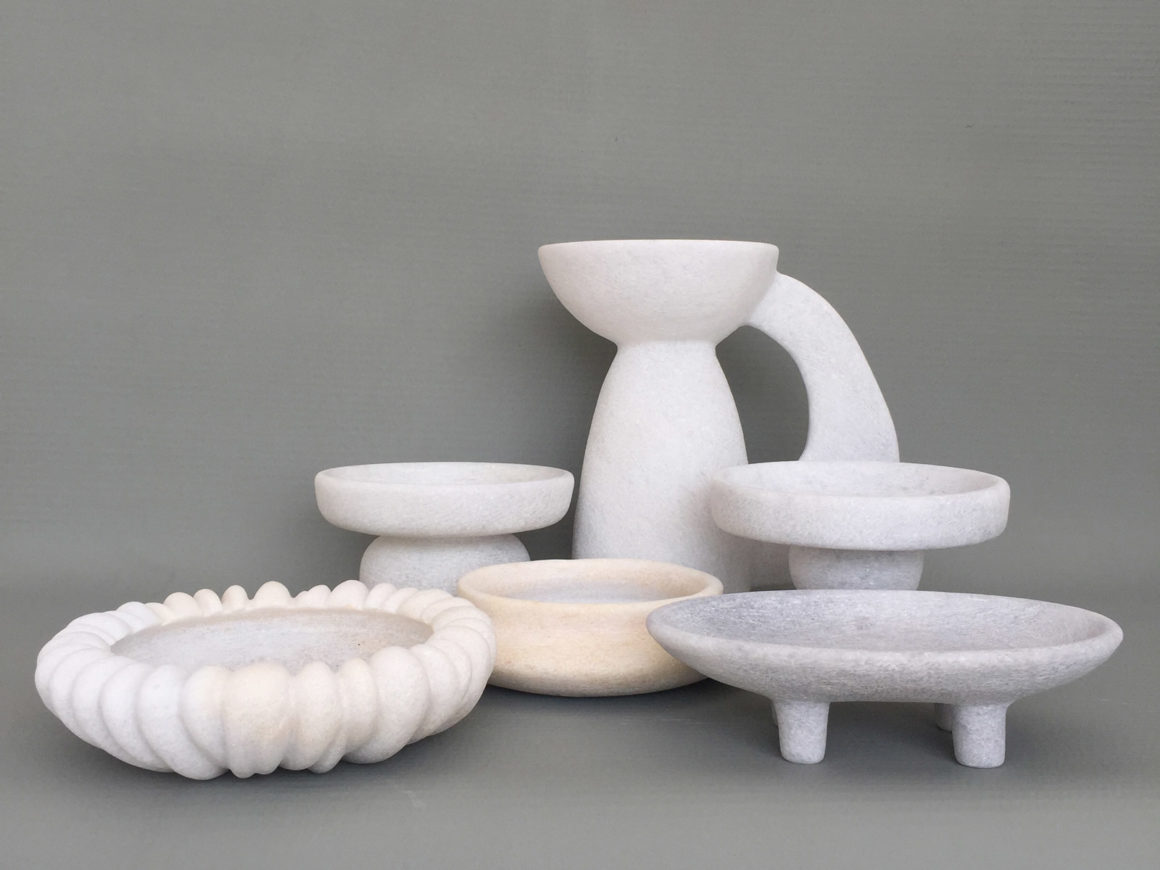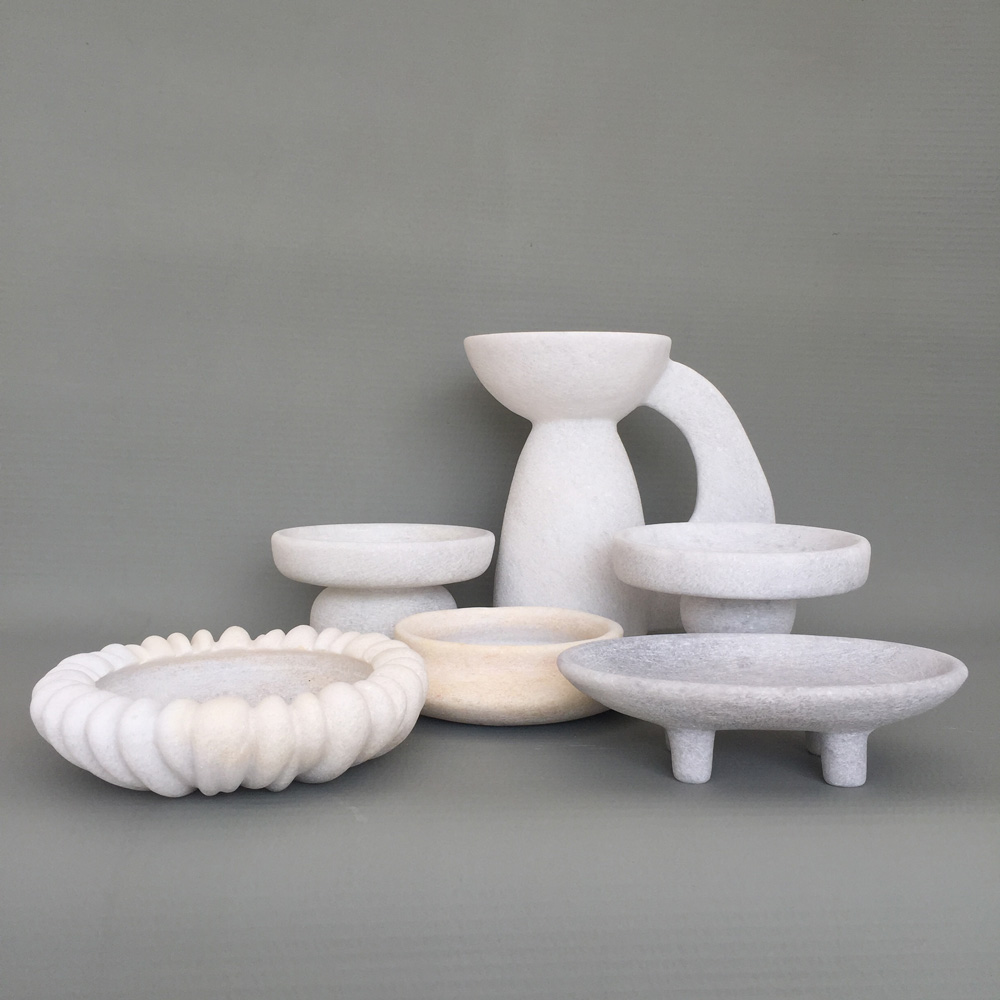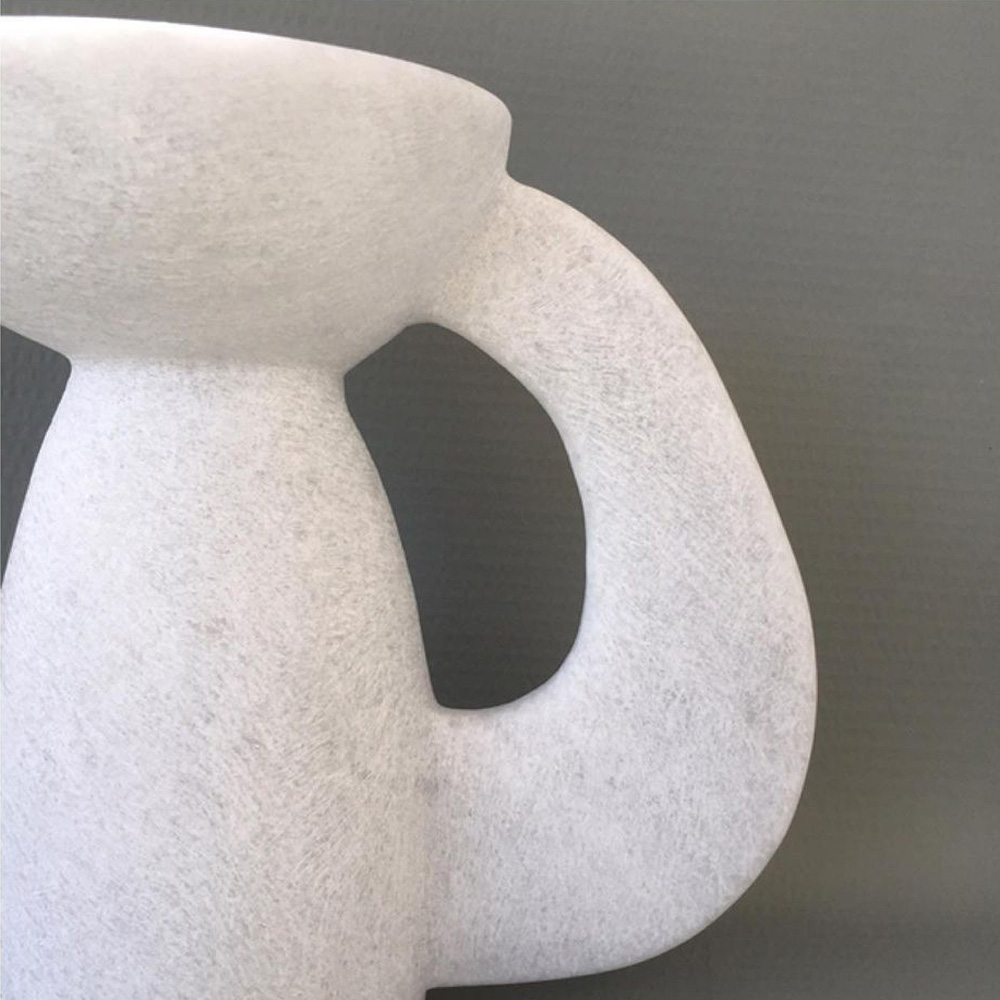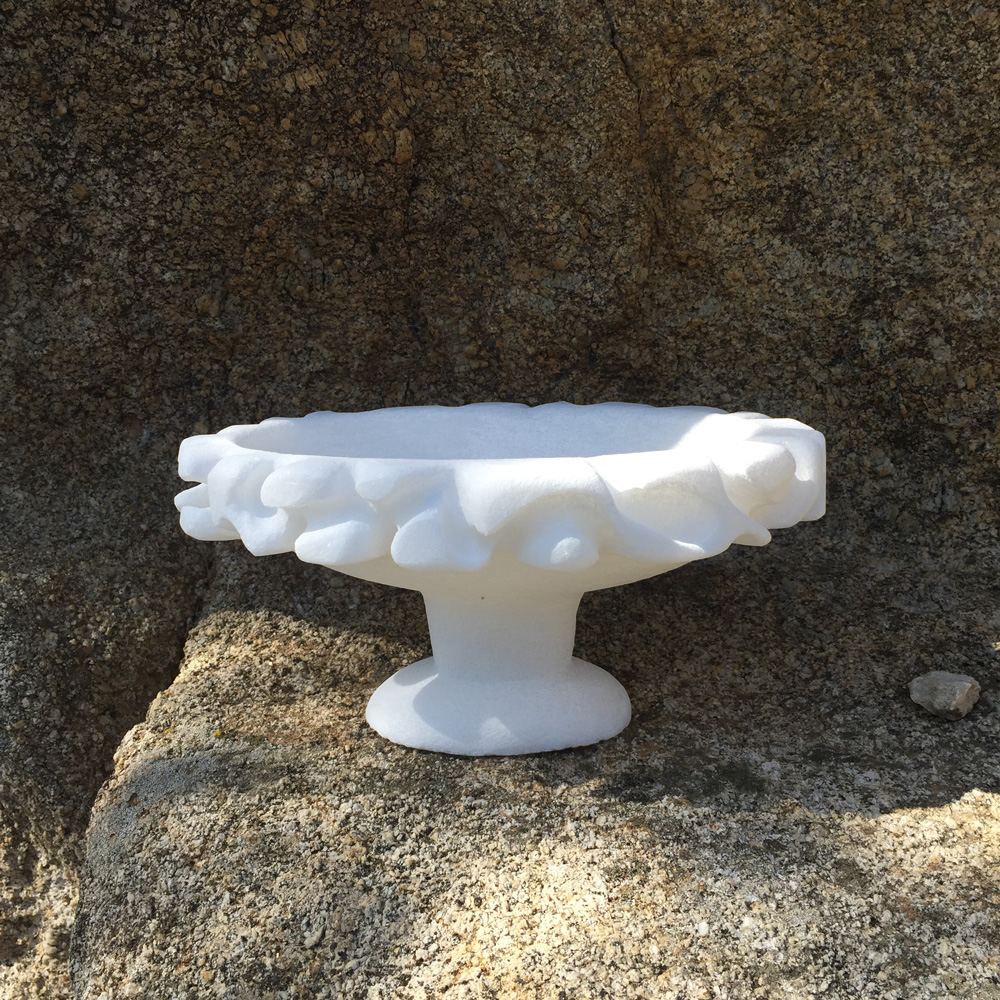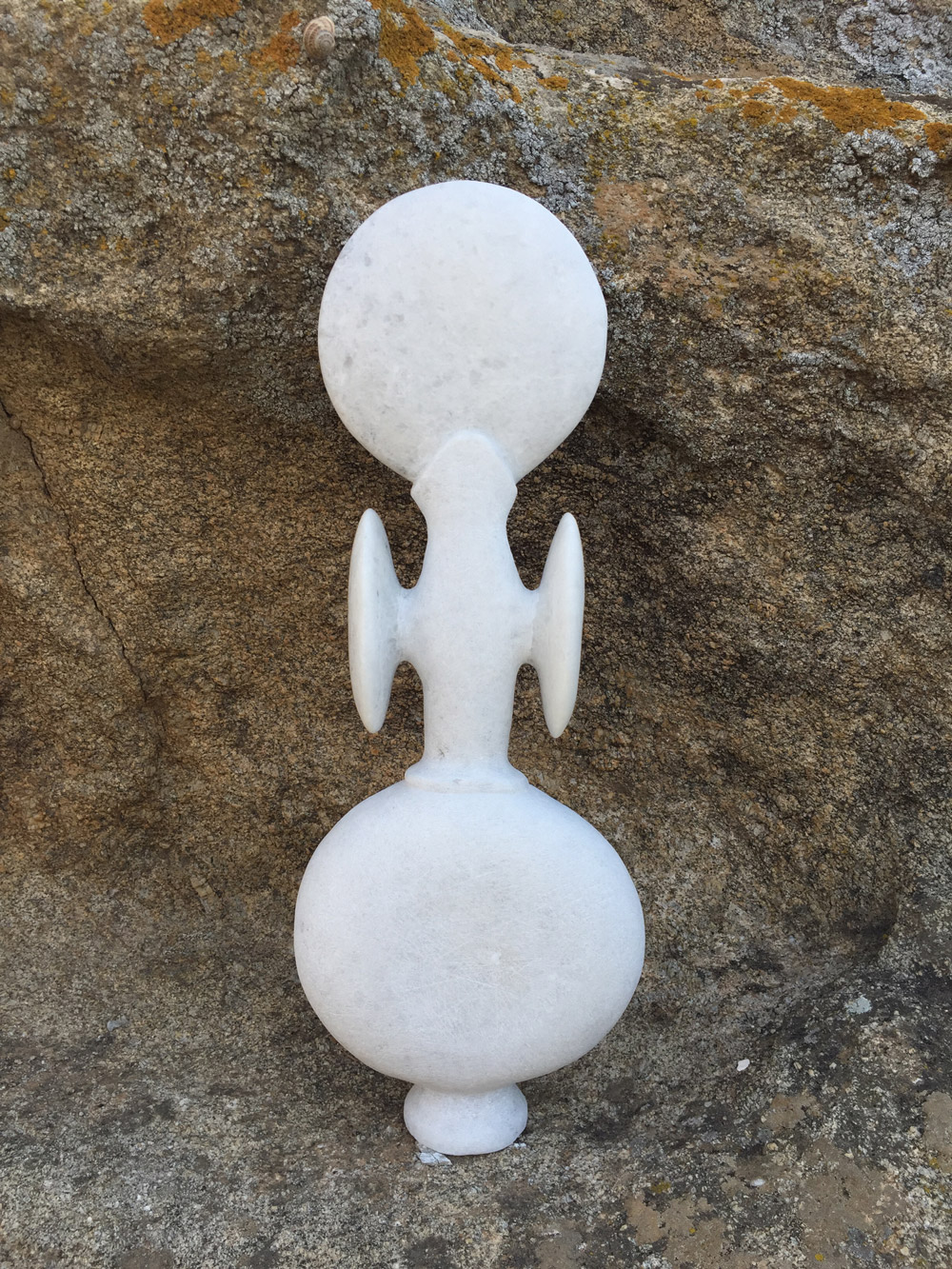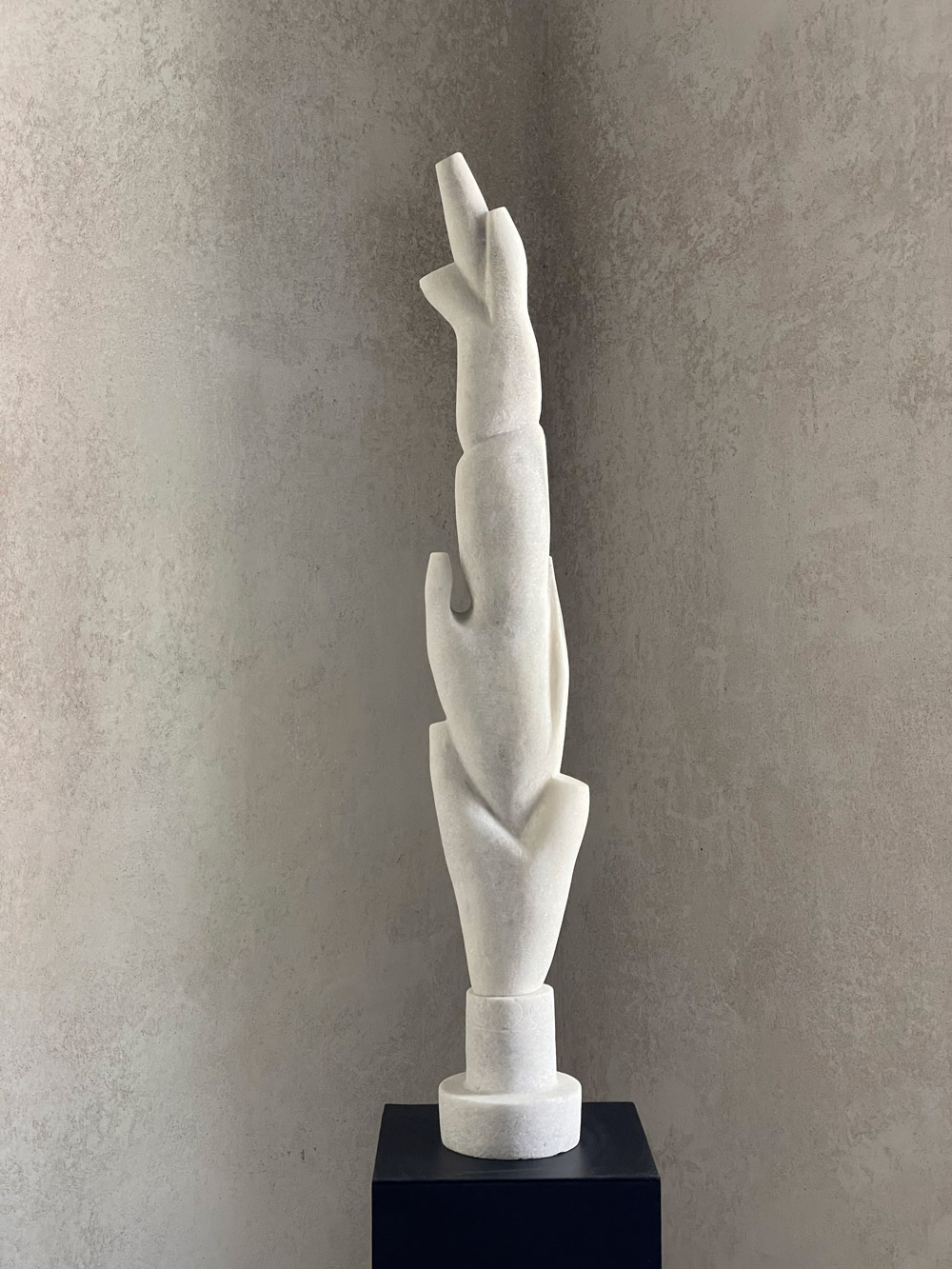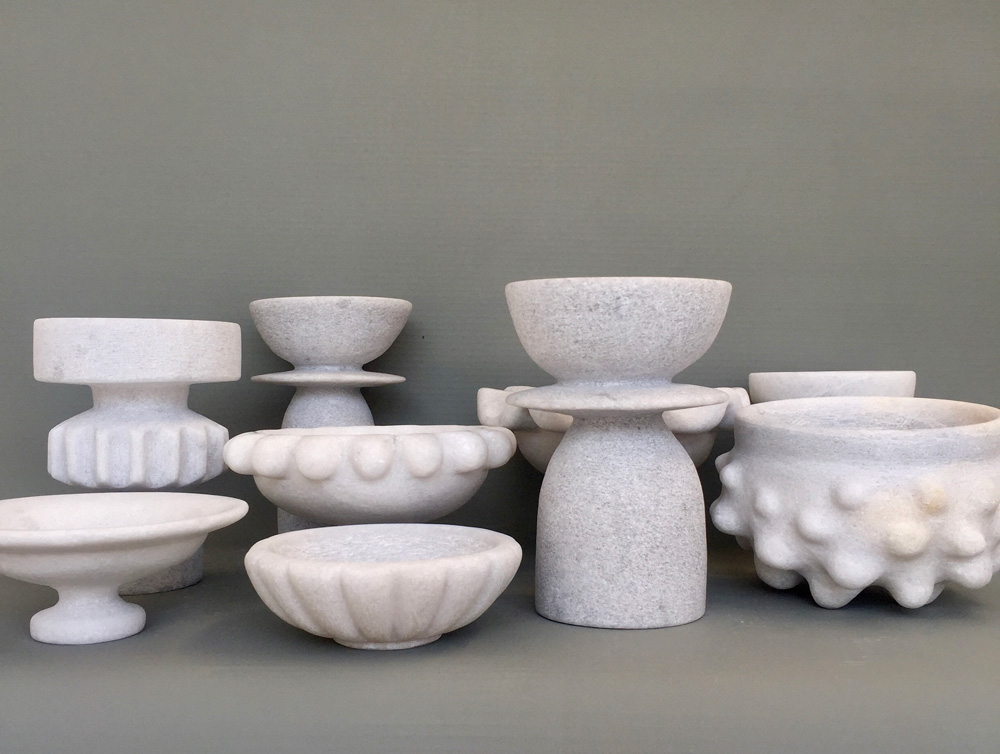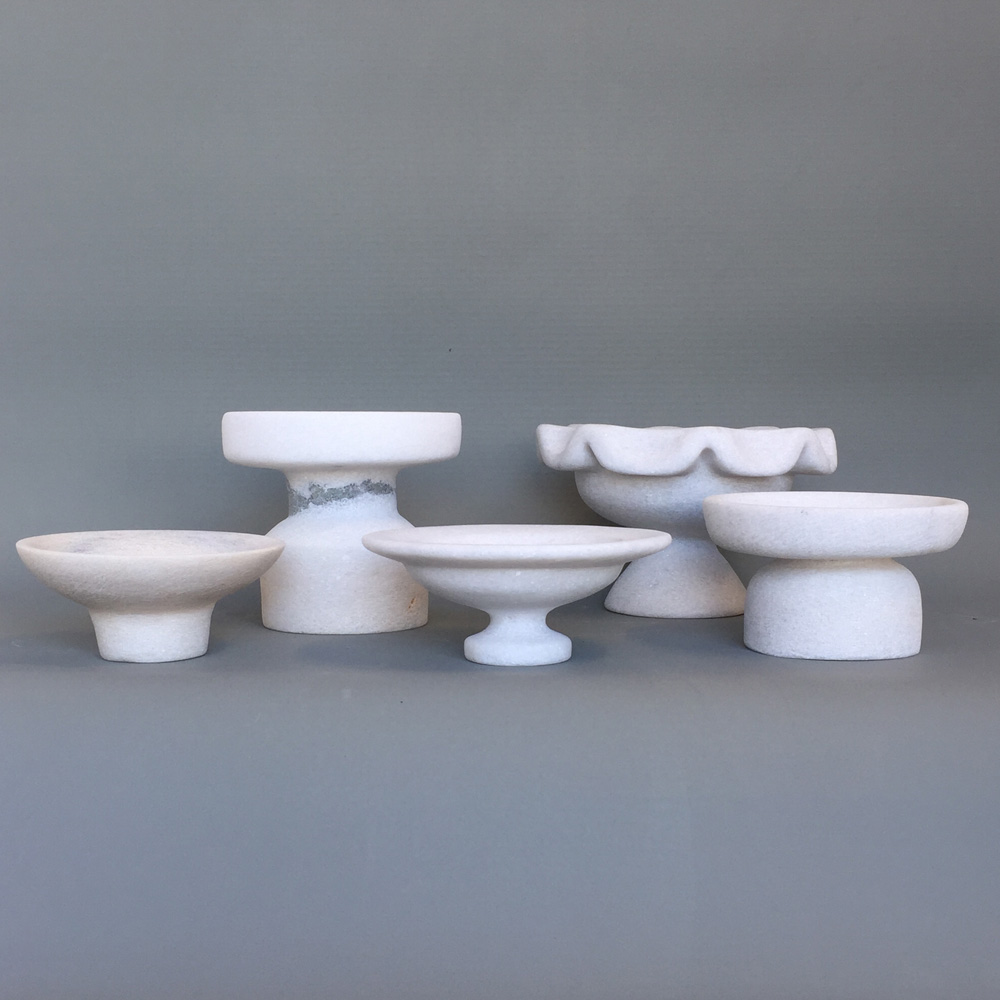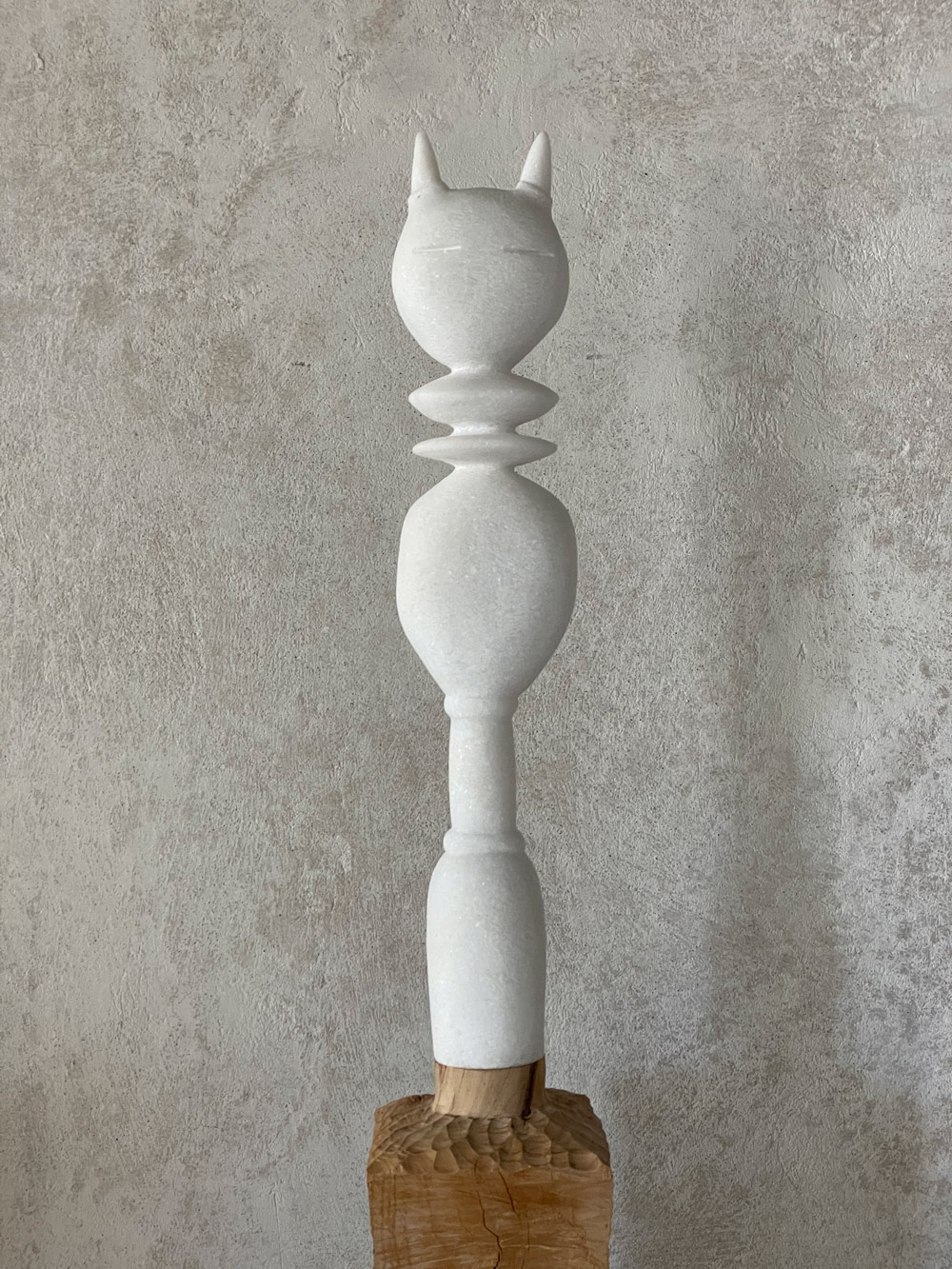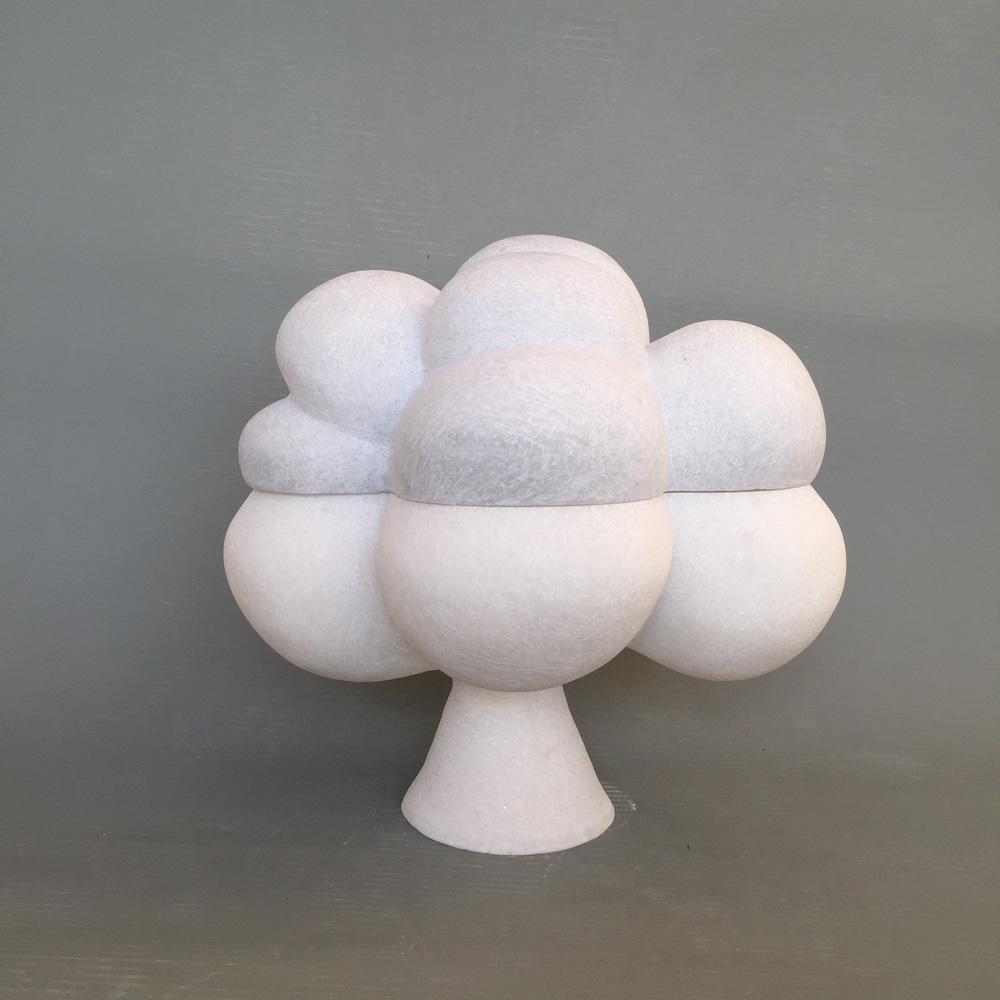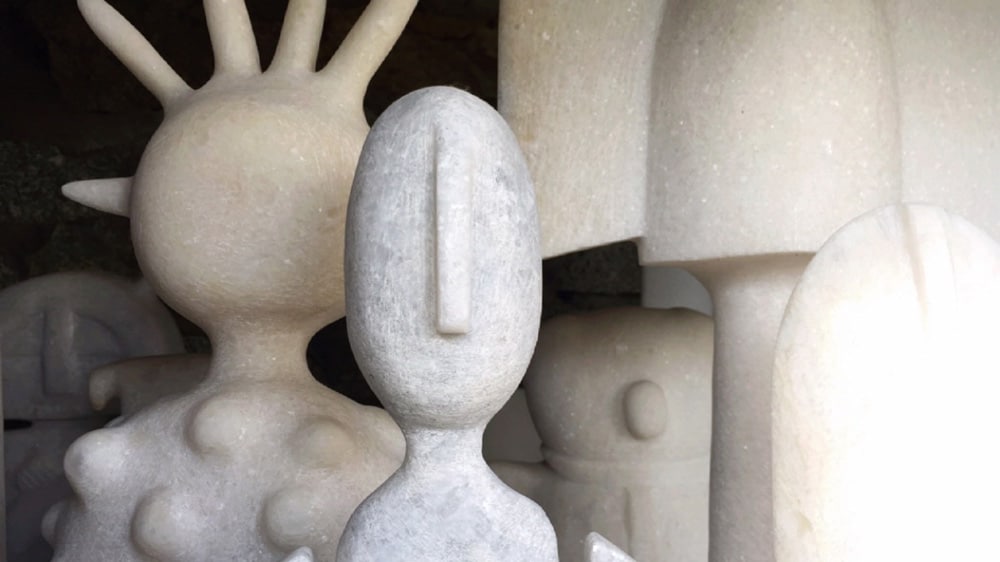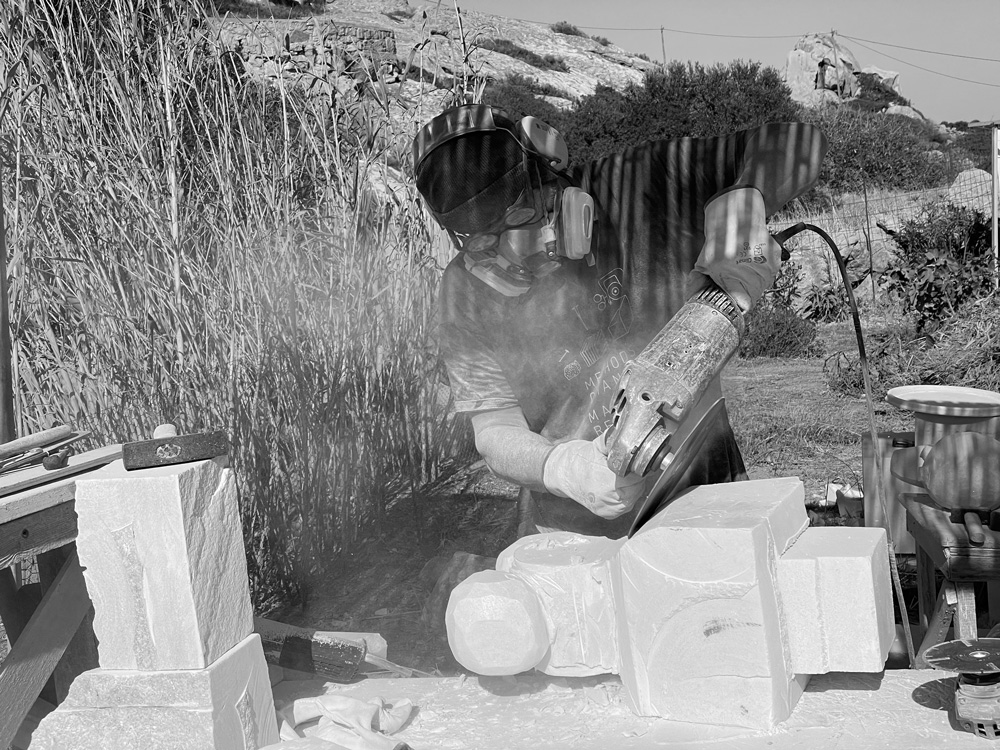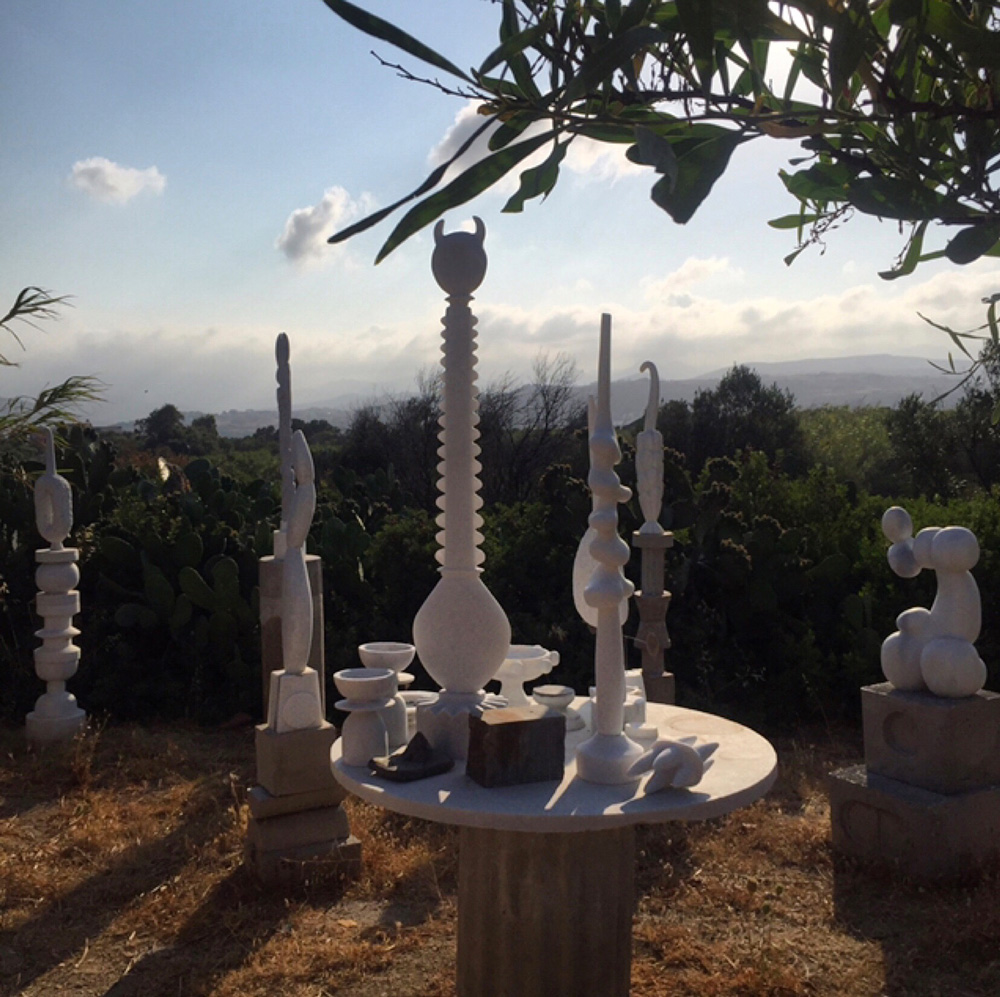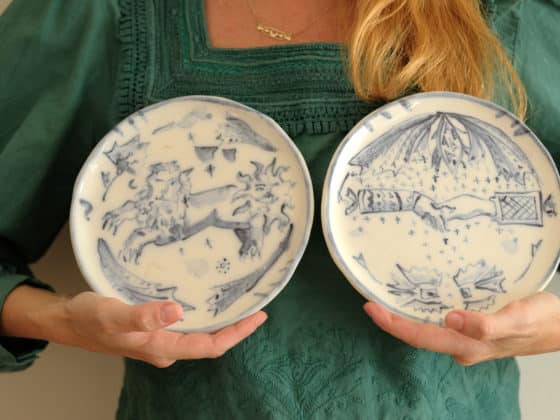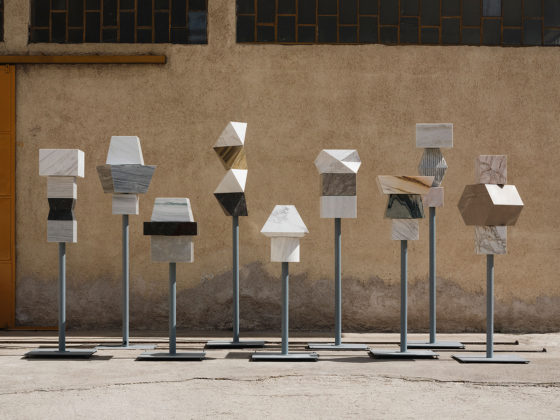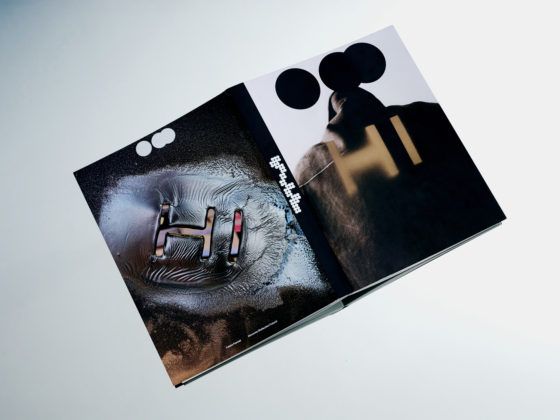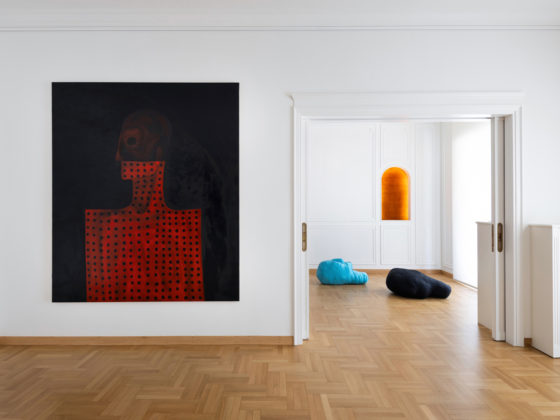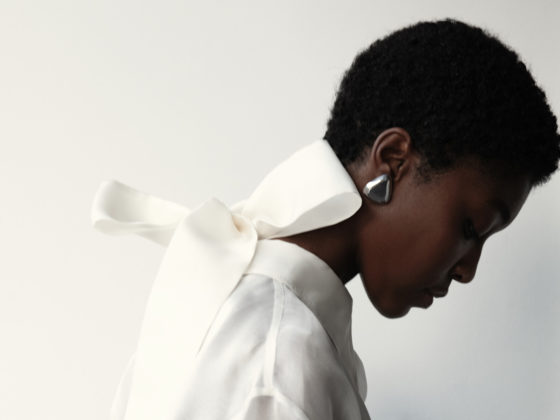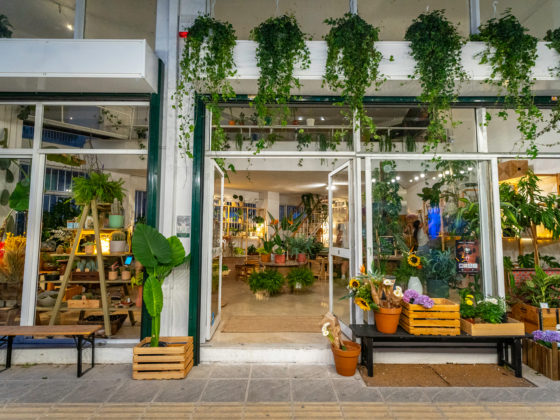Kalodromo, which means “good way”, is a small manufactory on the Greek island of Naxos in the heart of the Aegean Sea.
Kalodromo is intensively dedicated to the Cycladic stone working culture. The processing of marble dates back to the 3rd millennium. With this background and the influence of 20th century ceramics, Tom von Kaenel designs and produces vessels, objects and sculptures in Naxian marble under the label Kalodromo. At Kalodromo there are no product series and you won’t find Kalodromo at any fair. Every object, every sculpture is unique with a handwritten character.
Tom von Kaenel, sculptor and painter, was born in Switzerland in 1961. Already in his early childhood he was deeply devoted to art. His desire to bring beauty to the world is Tom von Kaenel’s inspiration, drive and source for the creation of his works. Already during his training as a technical draughtsman and later as a teacher of pictorial design, he devoted himself to painting and three-dimensional work. Tom von Kaenel has exhibited his work in various solo and group exhibitions. For seven years he was represented by Galerie Ute Barth in Zurich. Today Tom von Kaenel lives and works on the island of Naxos. Everything in his environment inspires and shapes his work. He creates objects and sculptures out of Naxian marble in craftsmanship liveliness and timeless beauty.
In ancient times, Naxian marble was used for the roof tiles of the Acropolis in Athens and for the various kuros statues that line the sanctuaries of the Greeks. The coarse crystalline structure of this marble allows the light to shine through at a thickness of 1 cm. The formal language of the vessels, objects and sculptures made by Tom von Kaenel can be described as eclectic. There are elements of early cycladic craftsmanship, antiquity, baroque and 20th century ceramics, which are reinterpreted or reassembled. The traces of craftsmanship lend the objects their individual and powerful character.
All the vessels, objects and sculptures Tom von Kaenel makes are unique, handcrafted. The stones all come from the surrounding marble quarries of the island. The Naxian marble is of white, grey or yellow-brown colour, its structure is crystalline. No measuring instruments other than compasses and scales are used in the production of an object. The eye decides on the final shape. This small deviation in symmetry gives the form its individual tension. The vessels, objects and sculptures are kept raw, the surfaces are deliberately not polished, so that the traces of the craft are visible. The crystalline surfaces are shimmering. This gives the object a unique liveliness.
